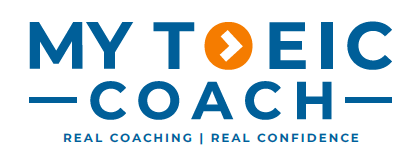Why More Study Time Doesn’t Always Help Your TOEIC Score
(and What Actually Does)
Let’s be honest.
You set aside two hours to study. You open your books. You get started.
Then you check your phone. Answer a message. Re-read the same sentence.
And by the end, you’re not sure what you actually learned.
Sound familiar?
You’re not lazy. You’re not unmotivated.
You’ve just hit a common problem: more time doesn’t always mean more progress.
🧠 Old Thinking: “Study More, Score More”
From school days, we were told:
“If you want better results, study longer.”
And sure — that worked in school.
Teachers praised time and effort. You got points for trying.
But real learning doesn’t work that way.
Your brain has limits.
After a certain point, your focus fades, your memory drops, and the time just… vanishes.
You were trained to believe that longer = better.
But Accelerated Learning for TOEIC shows something different.
🔁 What Accelerated Learning for TOEIC Recommends Instead
Accelerated Learning for TOEIC is built on how the brain actually works.
The key idea?
You learn more when you study in short, focused bursts — not long, tiring sessions.
Here’s the simple approach:
Study for 25 to 40 minutes with full focus
Stop
Come back later and review
Repeat across several days, not all in one go
This style uses your brain’s natural rhythm — and avoids burnout.
📏 Let’s Do the Math
Think 10 minutes a day isn’t enough? Let’s break it down:
10 minutes every day = 70 minutes a week
10 minutes, twice a day = over 2 hours a week
20 minutes, twice a day = almost 5 hours a week
And here’s the thing:
Waiting for ramen? That takes longer.
Lining up for doughnuts? Easily more than 10 minutes.
Scrolling Instagram before bed? Probably way more than that.
You have the time.
The trick is using it intentionally — and repeatedly.
📱 Make It a Habit, Not a Battle
You don’t need a perfect study routine.
You need one that’s easy to keep doing.
Here’s where those 10-minute bursts can go:
On the train
After lunch
Right before bed
While waiting in line
During a coffee break
It doesn’t have to be dramatic.
It just has to be regular.
And when you repeat it — day after day — your brain starts to lock it in.
✅ The Takeaway
Forget the pressure to sit down for two hours every night.
Most of that time disappears anyway.
Instead, use what actually works:
Short bursts
Daily habits
Smart repetition with space to breathe
Because real learning isn’t about how long you study —
It’s about how often your brain sees the right things, at the right time.
Try 10 minutes now.
Then again tomorrow.
Then again the next day.
Small. Focused. Repeated.
That’s how real change happens.
Want to Learn More?
Our blog is full of practical strategies that help test-takers like you build better habits, overcome common blocks, and improve TOEIC scores through smarter, easier methods. Try our free TOEIC Block quiz now!
